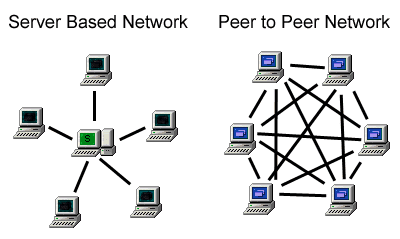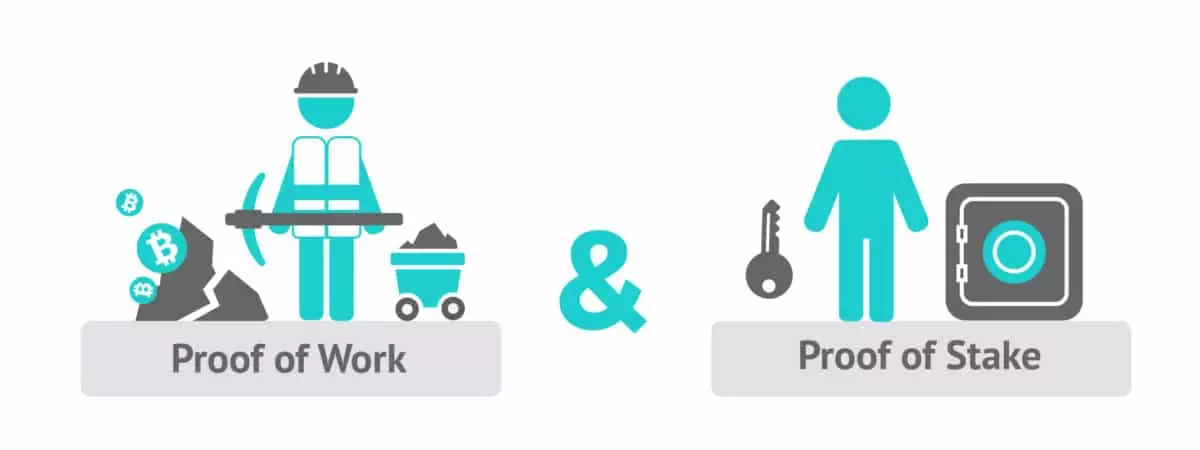All you need to know about dApps before getting started
The invention of Bitcoin, blockchain, and a decentralized system has brought many incredible benefits to us. As seen already, the financial system keeps developing in a decentralized manner, thus giving power to the people, and cutting the need for third parties or intermediaries, making decentralized applications the way to go.
So, whether you are a blockchain enthusiast or investor interested in dApps or simply looking for a way to monetize it, we have got you covered!
We’ll learn together what decentralized apps are and how they work by analyzing the implications in different industries, the pros and cons, and the challenges these new applications face. Without further ado, let’s get started!
What are dApps?
DApps are decentralized applications that run on a blockchain or on top of a peer-to-peer network of computers instead of a central computer. These types of apps have emerged since the creation of P2P networks.
In simple terms, decentralized applications are lines of code written within the smart contracts that effectively communicate within the blockchain. The smart contract rules are executed by an autonomous agent operating on an owner’s behalf without the owner acting.
Decentralized applications have been developed to function like traditional apps, whereby the user doesn’t notice a difference but provides much more in decentralization, security, transparency, and user control over data and assets. On the surface, decentralized applications have similar interfaces to any other web or mobile-based app.
However, not all decentralized applications must function with a blockchain network. Some dApps run on P2P networks that are not blockchains, such as Tor, BitTorrent, Popcorn Time, and Bit Message. But in this article, we will be focusing solely on blockchain-based decentralized applications.

What is The History of DApps?
It’s no wonder that we all know the history of decentralized applications starts with the inception of Bitcoin in 2009, as Bitcoin is considered a dApp. However, this hasn’t been quite the case since the first introduction of the idea of a “Decentralized System” 27 years before the invention of Bitcoin.
David Chum, the “godfather of cryptocurrency,” has significantly impacted blockchain technology through his dissertation, “Computer Systems Established, Maintained, and Trusted by Mutually Suspicious Groups”, published in 1982.
One year later, Chaum also published the “Blind signatures for untraceable payments” to protect privacy, thus leading to the advancement of cryptography, especially for cryptocurrencies, because they enable anonymous transactions.
Do you see how everything adds up? dApps and blockchain technology are connected, as blockchain serves as the underlying infrastructure for many dApps, and the most used one is the Ethereum blockchain.
What are dApps used for?
After learning about its history, implications, and what dApps are, you may wonder, “Why use a decentralized application?”. Well, decentralization brings multiple benefits, such as lack of third-party involvement, the decentralized apps being invulnerable to almost all types of attacks, no downtime, and many more.
Also, dApps have many implications in the gaming, medical, and financial industry, and their main great benefit is privacy protection, not something we often see in a centralized app. How often did big companies offer the free app in return for your data?
Within Web 3.0, dApps don’t come at the cost of your privacy. Instead, you can only share the required information and choose who sees it and for how long.
What Gets to Be a dApps?
To be considered a dApp (decentralized application), an application must meet specific criteria, such as:
1. Open Source
All decentralized applications have something in common, and due to their nature, they are open source, which means that dApps could not be controlled by a single entity, either a company or a single person, the owner.
The first condition a decentralized app must meet is to have its core source code publicly available and they must have an autonomous and unanimous consensus, meaning most network users must first agree on all changes. Also, the code must be available for anyone to analyze.
2. Decentralized Blockchains
To avoid the issues that come with centralization, decentralized applications must have their operations recorded on a decentralized blockchain or any cryptographic technology that is autonomous by nature.
3. dApps Gets You Rewarded
The validators of the decentralized blockchain, which have the task of verifying the records, get rewarded with crypto tokens based on their efforts.
4. Consensus Protocol
The decentralized applications must have a consensus protocol that gives the crypto token proof of value and manages how these tokens are generated.
This algorithm must be agreed upon by the application community must. For instance, Bitcoin uses Proof of Work (PoW), and EOS uses Proof of Stake (PoS) to generate new coins on the network.
Types of Protocols in dApps
The two most used protocols are Proof of Work and Proof of Stake:
Proof-of-work (POW) enables network participants to be rewarded based on how much work they have put into the network. Mining and adding them to the chain requires a lot of energy; thus, the blockchain remains secure. The mining rewards are tokens, and they are distributed based on the number of processed transactions.
Proof-of-stake (POS) involves holding and staking tokens; you can vote on a new block based on your amount.

Different Types of dApps
Not all decentralized applications are the same, as they can have various kinds of functions and use the blockchain differently. Let us dive deeper into the subject.
Type I Decentralized Applications
The type I dApps are the ones that run using their blockchain. Bitcoin, Litecoin, and other altcoins forked from the Bitcoin code are examples of type I decentralized applications.
Type II Decentralized Applications
Type II runs on the blockchain of type I but issues its tokens by rewarding the network participants. For example, the Omni Protocol is a type II decentralized application.
Type III Decentralized Applications
Type III protocol uses type II to issue the tokens required for their functioning. For example, SAFE Network uses Omni Protocol, and its generated tokens are used to purchase distributed file storage.
Difference Between dApps and Smart Contracts
Many confuse decentralized apps and smart contracts because they have similarities regarding function but are separate. A smart contract is a software that automatically executes the terms agreed upon by two or more parties and distributes the digital assets only when all the requirements are met.
A decentralized application executes similar operations to the smart contract but has two key differences: it does not limit the number of participants it can have and does not necessarily have to be related to having a financial aspect.
Pros and Cons of dApps
Advantages of Decentralized Applications
Security is a big issue in the tech sector; however, dApps are considered more secure and safe due to their decentralized nature and use of blockchain technology. A hacker needs a centralized failure point to attack, and this type of vulnerability has been exploited before, leading to massive data breaches and substantial monetary losses.
DDoS, SQL injection, XML attacks, and phishing are all attacks that exploit an app’s single point of failure. With decentralized applications, this is not an issue anymore, and you can safely enjoy internet surfing.
Because the data stored by the blockchain requires all its nodes to validate any new transactions, a single entity cannot take advantage of the system and alter the dApp for its use. Moreover, the hacker would also have to change all the blocks to hide any alteration of data stored in a blockchain so that their activity is not detected.
Unlike traditional applications, dApps do not need a central authority to enable transactions and make changes necessary for the platform’s functioning. Decentralized applications are completely autonomous once they have been fully launched. This allows the dApps to operate without constraints set by external factors such as a corporation or a government.
A decentralized application cannot be subjected to centralized control, meaning it cannot be censored or controlled by any entity.
Disadvantages of Decentralized Applications
Since the use and development of decentralized applications are still in their early years, their experimental nature may lead to unknown issues. Yet, nothing beats the “Trilemma of Scalability,” where the dApp requires significant computations that will overload a network, causing network congestion.
And nonetheless, there is still the challenge of modifying the code once deployed. As stated by Ethereum, decentralized apps are difficult to be edited and updated because the data and code published to the blockchain are hard to modify.
How do dApps make money?
This is a different story, as it does not provide direct incentives, as often seen in standard monetization strategies for regular business applications.
Decentralized applications rely on multiple token activities, such as crowd sales and token launches, transaction fees, donations, and the creation of digital goods.
Yet, traditional applications use in-app ads, in-app purchases, subscription-based services, and other affiliate marketing strategies, which is different for decentralized apps.
What are some famous dApps?
Augur
Augur is a type II dApp based on the Ethereum blockchain that allows participants to make market predictions. The predictions can be converted into “shares,” which can subsequently be bought or sold.
SiaCoin
Sia is a type I dApp which uses blockchain to offer a decentralized storage platform that leverages the “underutilized hard drive capacity”. The project uses its own private blockchain.
It is a cloud and blockchain-based marketplace for data storage. The platform uses empty hard drives and offers them as cheap cloud storage, which anyone can use.
SAFE Network
The SAFE Network is a type III dApp, a decentralized storage and communications data center. SAFE, an acronym for Secure Access for Everyone, uses peer-to-peer technology to enable network users to share their computing power. The dapp uses the Omni Protocol (a type II dapp based on the Bitcoin blockchain) to issue “Safecoins,” allowing network users to buy storage.
Importance and growing popularity of dApps
Despite the challenges, the dApp industry has shown remarkable resilience and growth. Consumer and businesses’ increasing adoption of blockchain technology indicates a promising future for the industry.
To provide a clearer picture, it is worth noting that the decentralized applications industry witnessed a significant 50% surge in unique active wallets (dUAW) during 2022. This substantial increase took the average daily dUAW count from 1.58 million in 2021 to 2.37 million in 2022, representing a significant milestone for the industry.
Moreover, in the first quarter of this year, there was a 9% growth rate of decentralized applications, totaling 17,564 dApps across all chains compared to Q4 2022, a recent study suggests.
Also, the Global Decentralized Applications (dApp) Market is expected to grow with a CAGR of 56.3 % from 2023 to 2029.
The fastest-growing categories are:
- Web3 Collectibles – 25%
- DeFi and Exchanges – 19%
- Web3 Social – 17%
- Marketplaces – 11%
- Web3 Games – 7%
- Other – 5%
Final Thoughts on dApps
The importance and growing popularity of decentralized applications is undeniable, as seen through the increased adoption in various categories, and the projected market growth. With their potential to revolutionize industries and empower individuals, dApps promise to transform how we interact with technology and reshape our digital landscape. They represent a groundbreaking change in thinking, enabling decentralized and transparent applications that empower users and redefine the possibilities of technology in our increasingly connected world.
 coindoo.com
coindoo.com